Independence
We celebrate it year round
The days around July 4th are a noisy time in this region. The air becomes thick with the smell of gunpowder from all the fireworks set off in the surrounding areas. After a dry spring seaseon, we were fortunate to have gotten some rain just before this day, so that the ground would be wet enough for the pyrotechnics. At weedom, we don’t concentrate as much on the official Independence Day of the U.S. as we used to. We’re all about helping people to increase their food and medicine independence year round. We see increased self-sufficiency as an avenue towards resilience as well as freedom and self determination. To this end, we hope to draw more people to the great outdoors, and towards more natural food and medicine.
Since we took a little road trip prior to the holiday, this week’s article is lighter, and a bit of a tour of some plants that we’ll present in detail in the future. We invite our newer readers to check out the archives, to see which weeds we have presented so far. (As of Summer 2023, Weedom is still a baby SubStack, about 5 months old, and growing well, thanks to you. )
After a few inches of rain the grass has greened up a bit already. Heal all, Prunella vulgaris was in hiding 2 weeks ago. It’s popped up all over the place now, and some little plants are blooming. Some medicinal herbs are mild and easy to use. This is one of them.
Our earlier article, Mallow mentioned the relatedness and similar utility of marshmallow and hollyhock, which is fully in bloom down the road. This pic, (thanks to our donor) is from June, but the hollyhock is still going strong today, and attracting bumblebees galore.
Bumbles are mellow. With all the herbs growing by the back door, we live with the bees. Bumblebees, even the girls with stingers, would rather not bother us, and they’re very photogenic. Even our local honeybees aren’t super aggressive. Maybe they’ve been getting into the hemp which has become a cash crop once more. :-D
Hollyhocks belong to the Malvaceae family like mallow, Malva neglecta, and Marshmallow, Althea officinalis. The flowers of hollyhock are used as a demulcent and diuretic. In the cases of mallow and marshmallow leaves and roots are more often employed.
Wandering over to the hyssop, there are 2 dissimilar plants to which that name is commonly applied. The one on the right is the type that people utilized in biblical times for coughs, as an antiseptic, G.I. stimulant, etcetera. On the left is an amazing anise mint plant which makes a great tea.

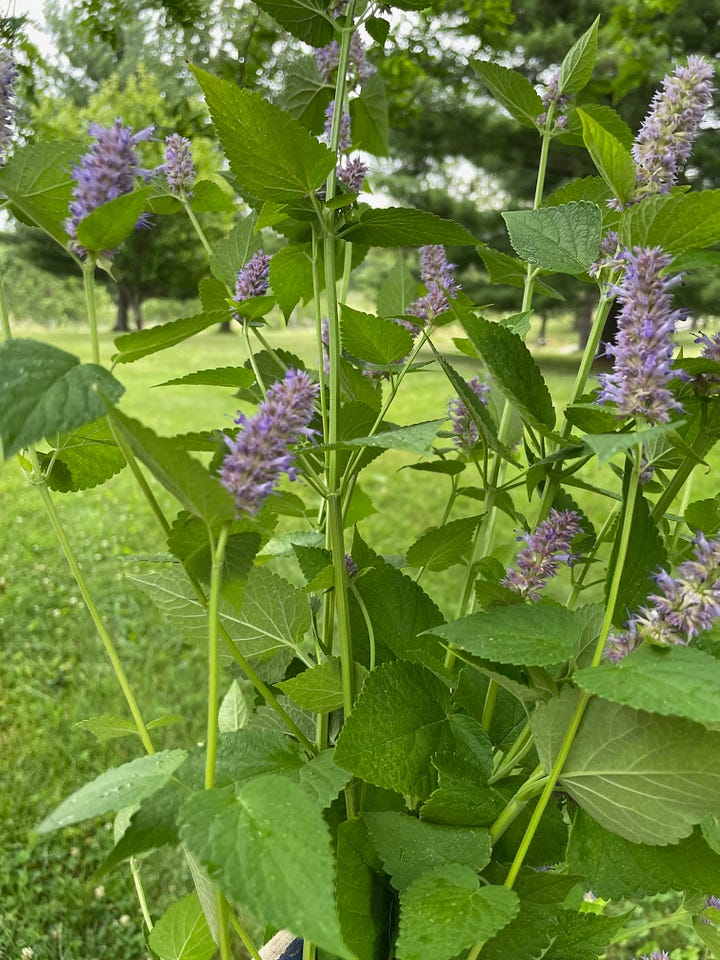
The elderberry plants, Sambucus nigra, bloomed fairly early this year, before a lot of bugs were available to pollinate, so we’re not seeing much berry formation. A second set of blooms are showing up now, which we hope will yield some fruit. During our road trip we saw numerous, later blooming elderberry bushes, which will hopefully bear more fruit than ours. Elderberry flowers are used as a source of milder medicine than the leaves or berries of this plant.
Various edible flowers showed up in June, and a few still remain on the yucca plants, which have officially become a weed in our location. They’re popping up everywhere by spreading of the roots, and from seed.
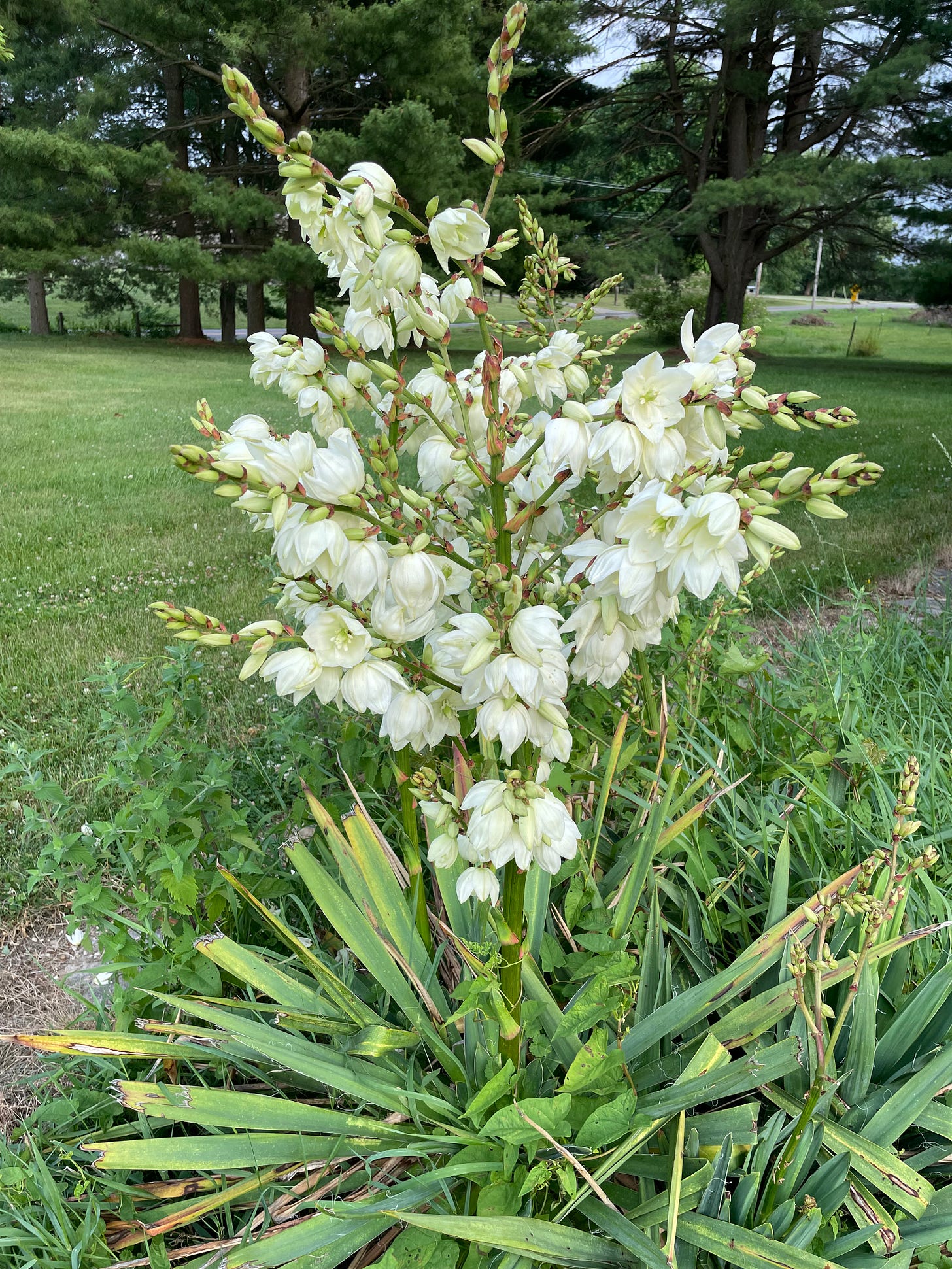
Yucca with 2 C’s have edible flowers, but the roots contain enough saponins to be utilized for soapy purposes. The yuca with edible roots has 1 C in the name, and is also known as cassava. Controversy exists regarding whether just the substantial petals or the whole flower can be eaten. Some people report local irritation from eating the pistil and anthers. Food sensitivities happen. At weedom, we eat the whole flower raw, though sautéing them is fine. We have been following cattle around for a number of years, and the grazing habit has rubbed off, particularly on this writer.
We are hoping that the monarch butterflies notice what a great year we’re having for milkweeds, Asclepias syriaca. (They like our butterfly weeds too, Asclepias tuberosa)
Similarly, the blackberries seem to be doing OK this year, despite the overall dry weather. Regionally, the apex of wild black berry picking is mid July, but there’s high variability among the cultivated types. The leaves of this plant are of considerable medicinal interest.
Our phone cameras are busy, and our herb drying hoops are packed. We’ll be back next week with details about an amazing summer weed. Until then, enjoy a couple more views of the disorder of weedom. Tell us what’s growing around you! Prayers are going up from weedom for our crazy world, and for your best possible growing season. Thanks for spending time with us!



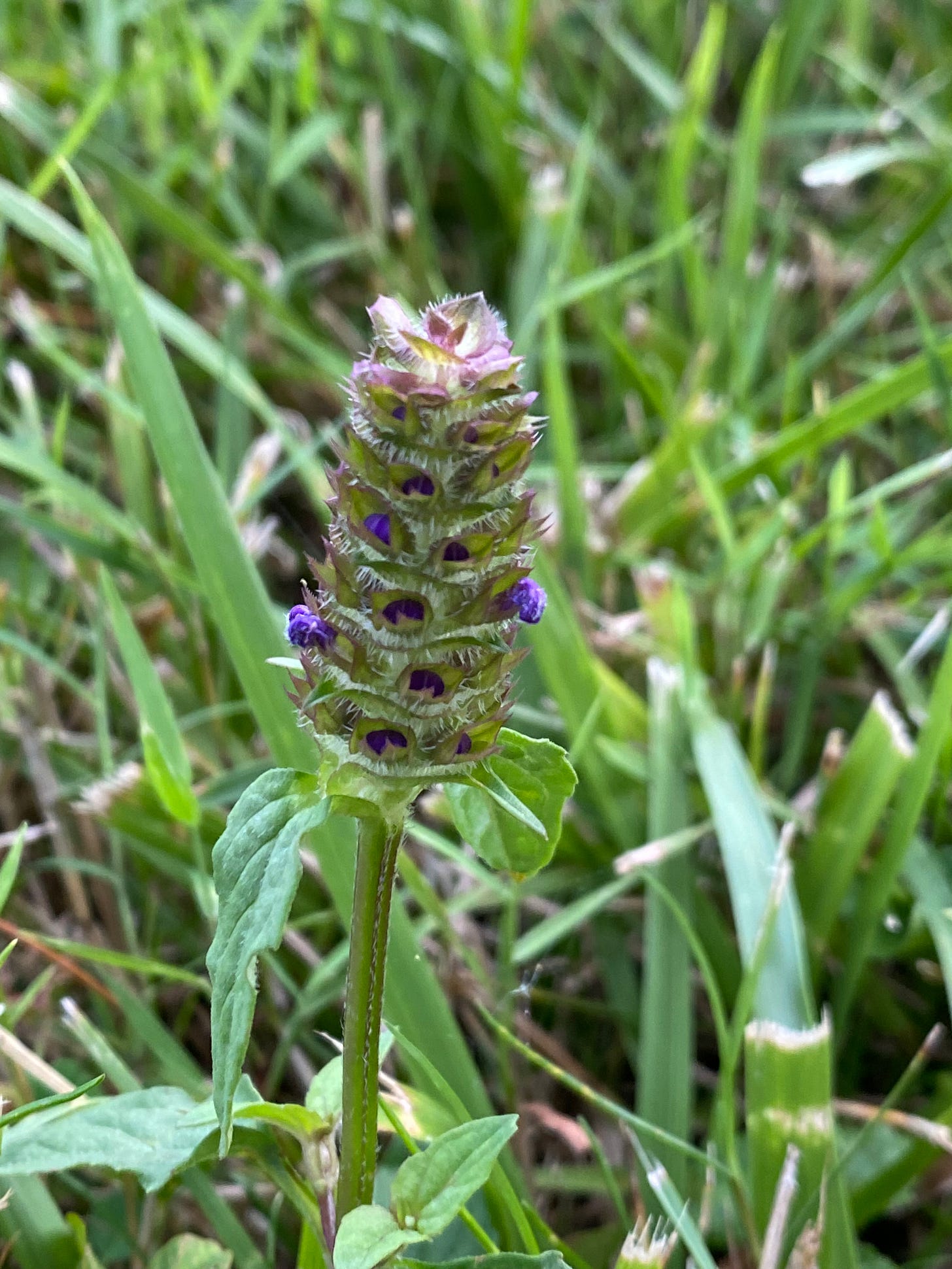
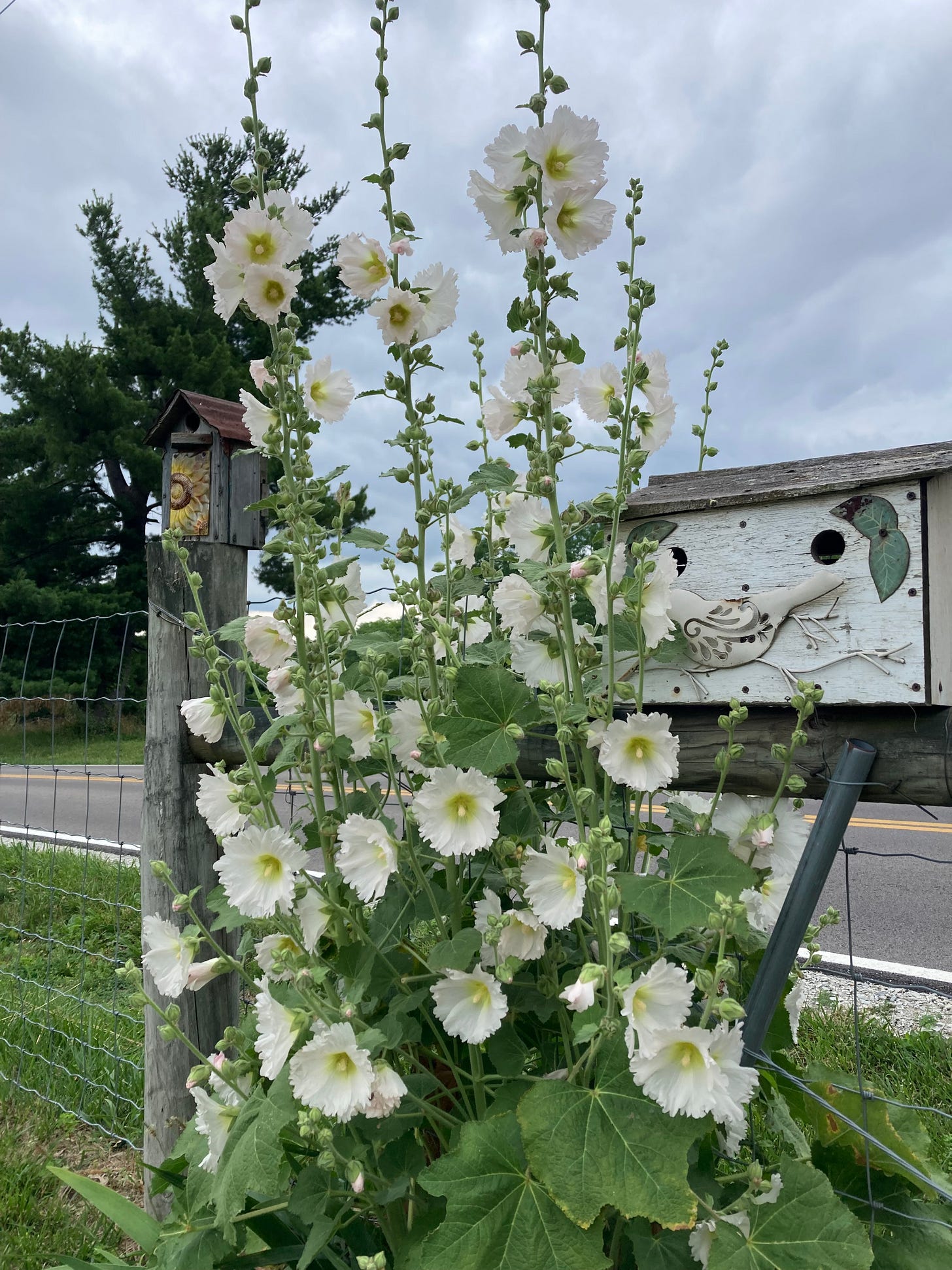
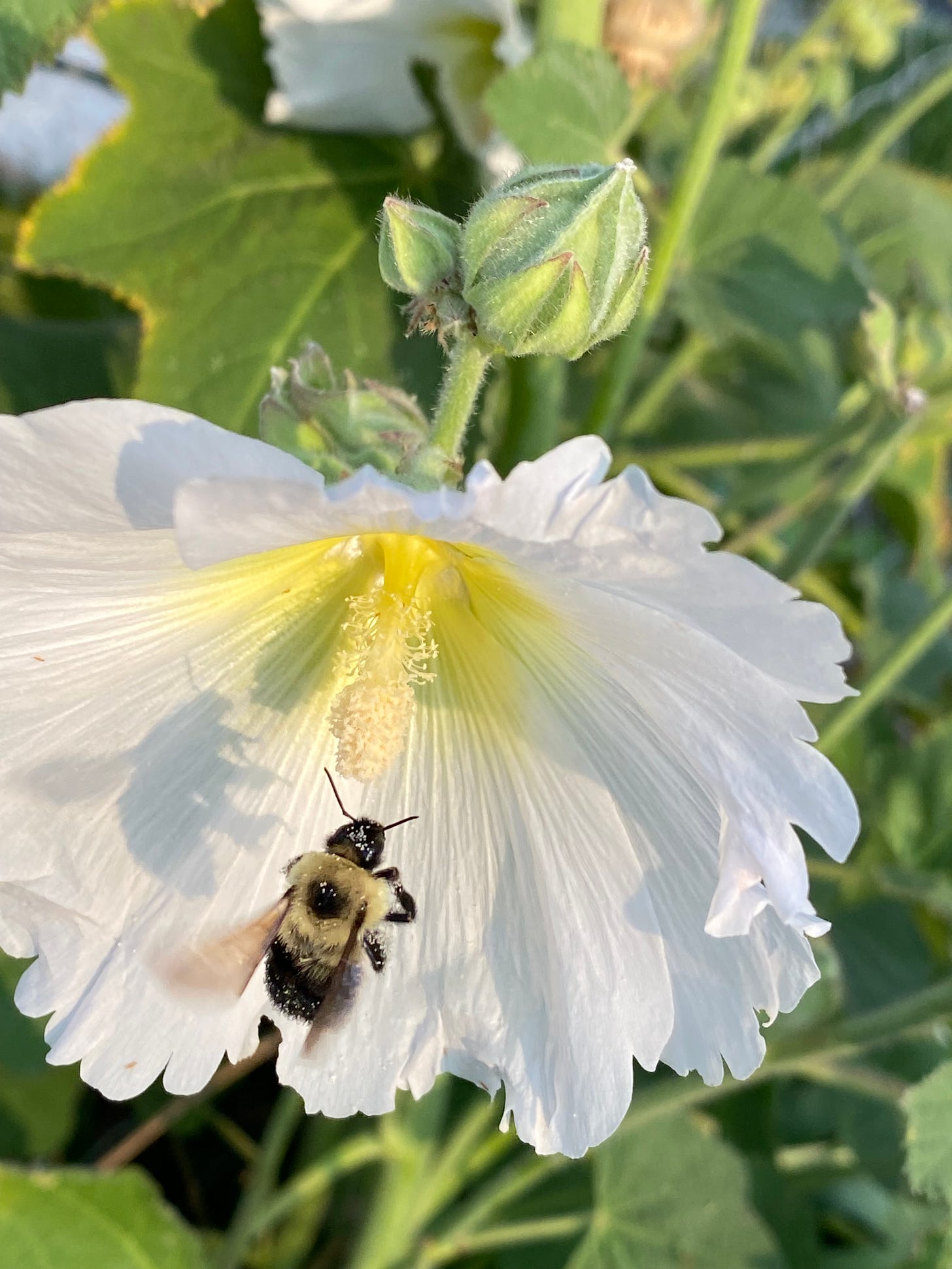

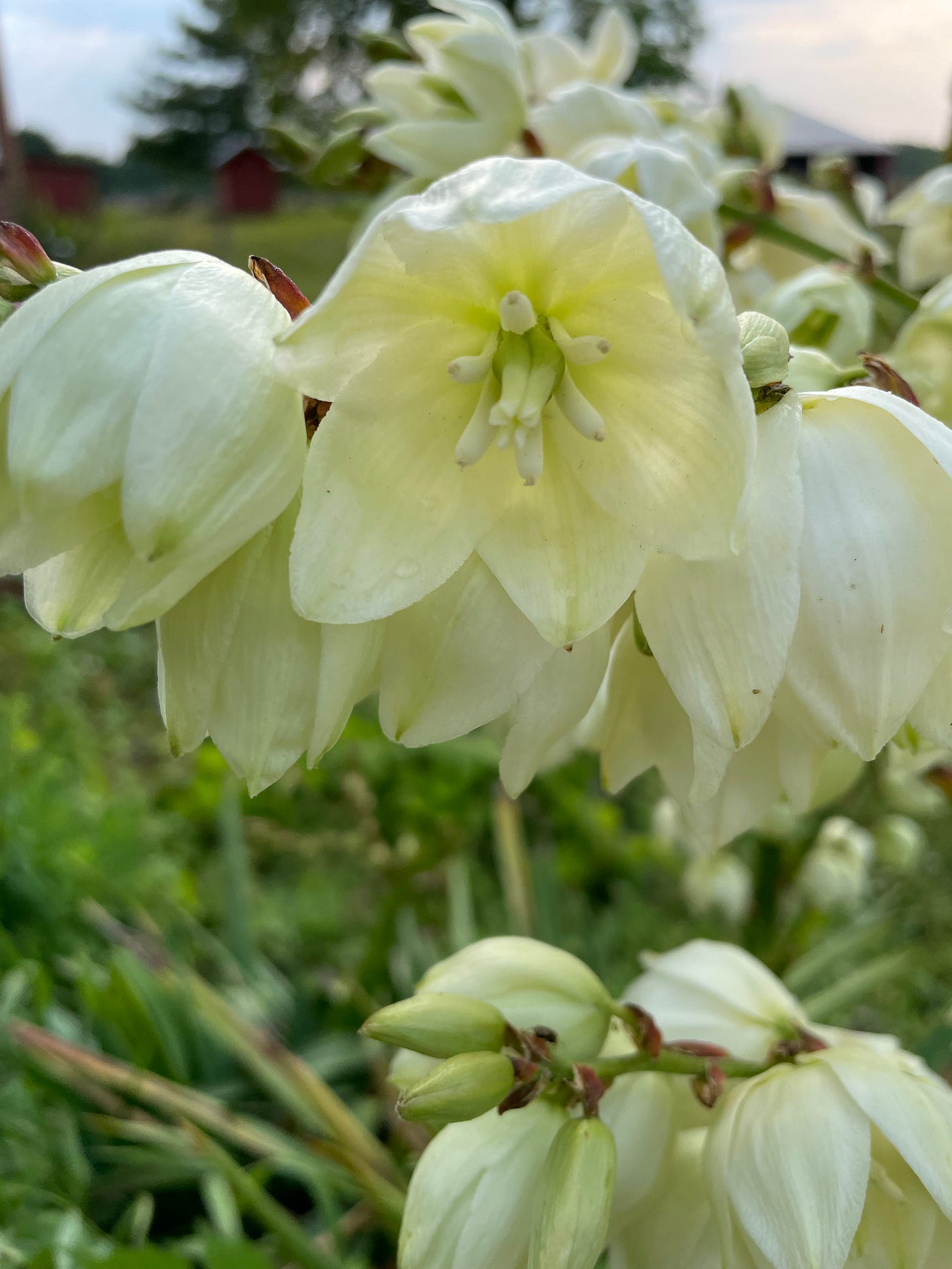
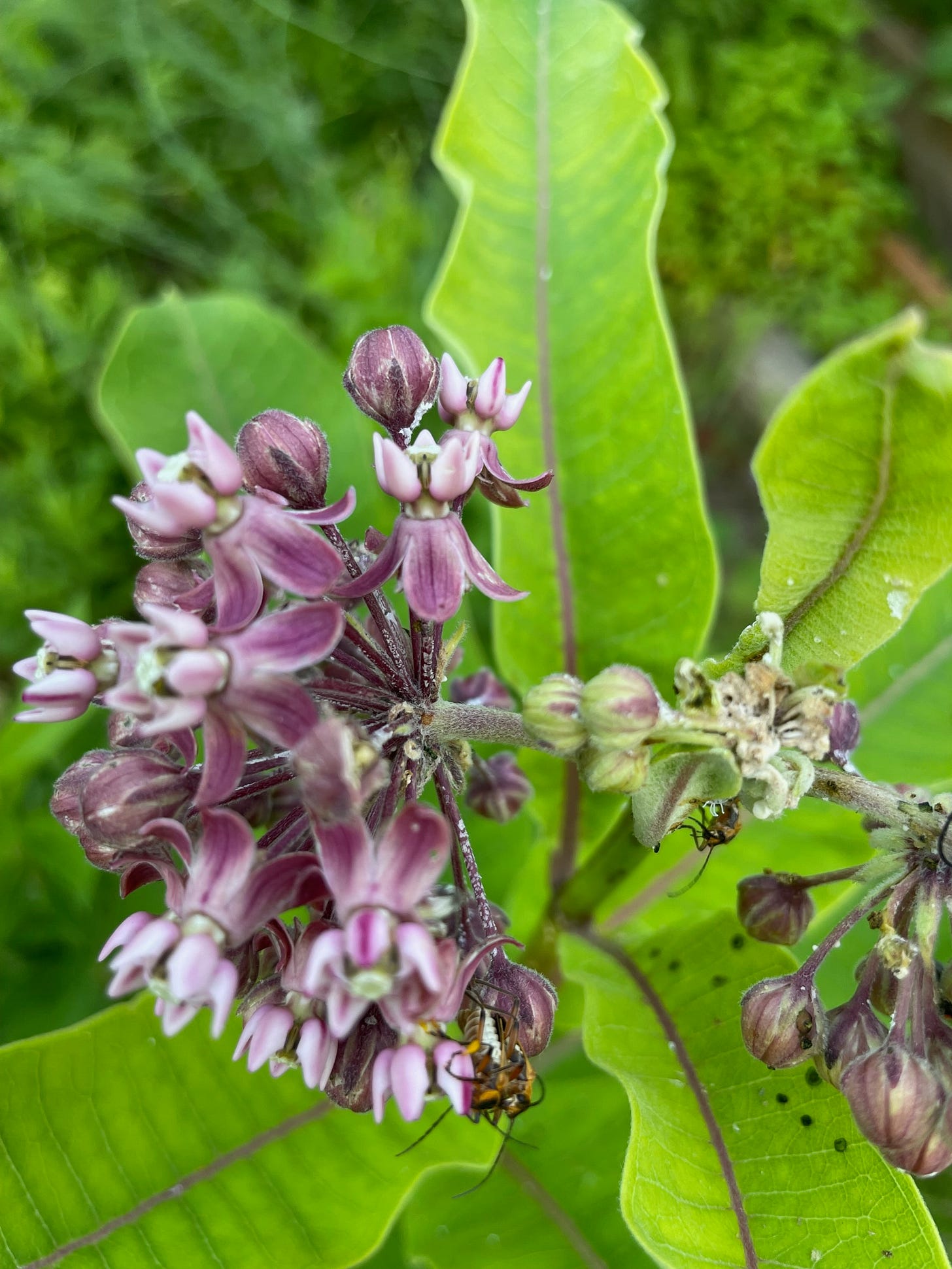
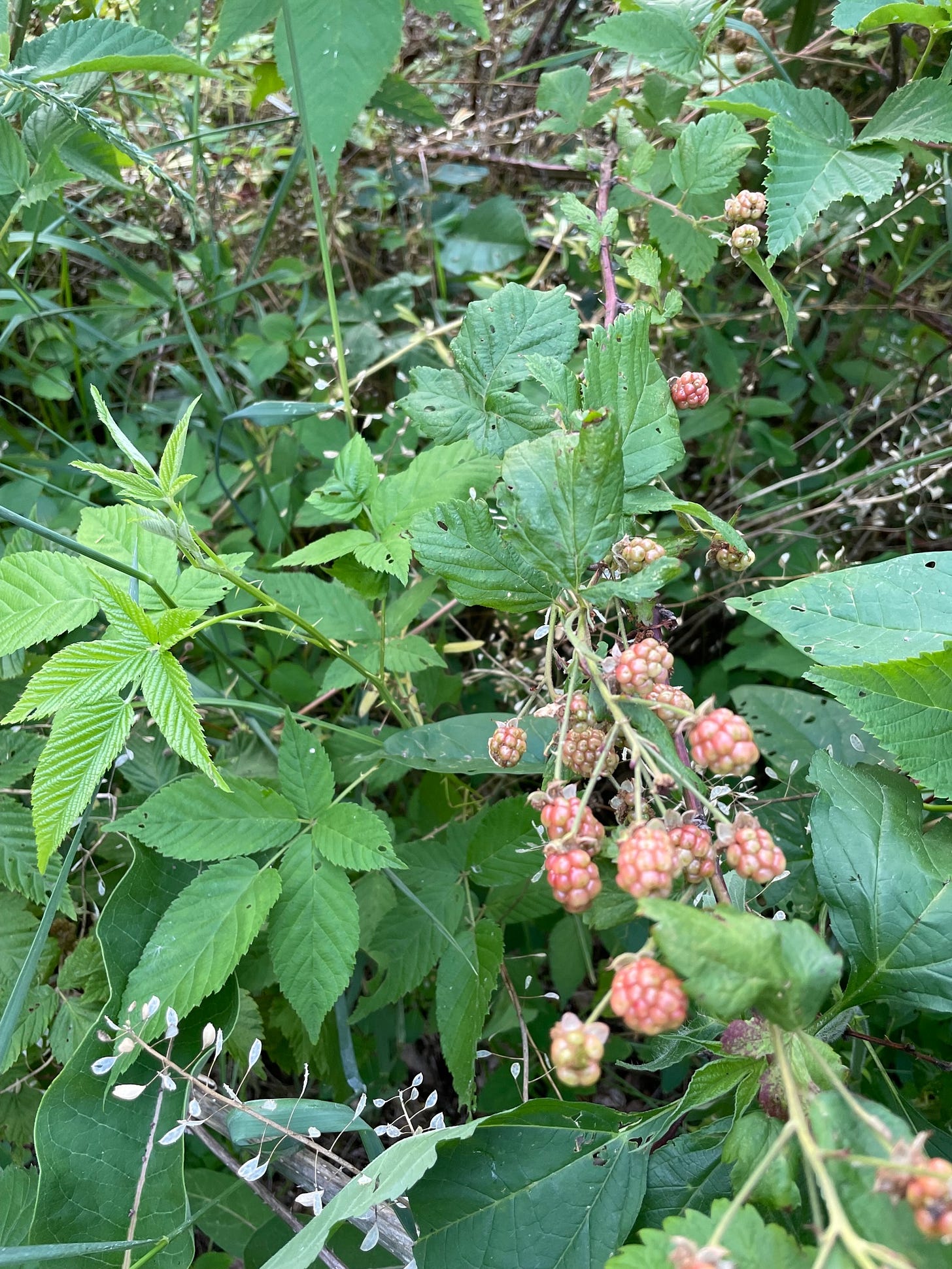


Great content and images. I learned something new about each of the featured plants. Looking forward to your next piece!